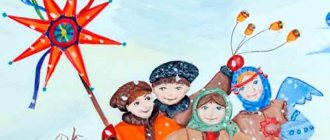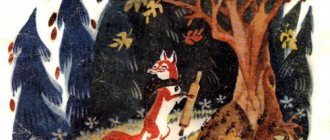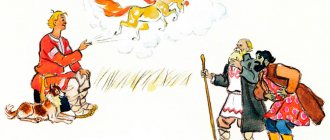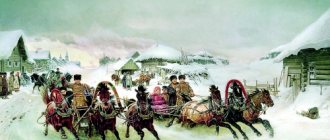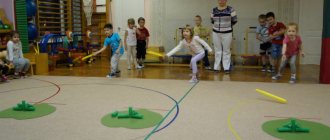Is it a fairy tale for children? Initially, no. The first books of fairy tales were collections of folklore stories, and it was impossible to call them children's books, even if one wanted to. Only later did fairy tales, adapted by writers, become reading material for children. In Russia, the first fairy tale written specifically for children appeared only in 1829. It was the well-known “Black Hen, or Underground Inhabitants” by Anthony Pogorelsky.
It is unlikely that today anyone will seriously begin to argue that fairy tales are a useless atavism, but at the dawn of the Soviet era they were recognized as harmful. Many people got it back then, and especially Korney Ivanovich Chukovsky for “Crocodile”, “Cockroach” and “Tsocking Fly”. Books with folk tales were removed from libraries, and fairy-tale “mysticism” was considered nonsense that interfered with the education of the working class. But the fairy tale survived just like the New Year.
Today the fairy tale lives in a variety of genres and book formats. The choice is huge: folk and original, modern and ancient, translated and Russian, adapted and unadapted, “uncut.” Connoisseurs of authenticity can purchase reprinted editions of ancient books, and fans of everything modern can purchase fairy tales dressed in the most conceptual literary and design form.
Fairy tales for the little ones
When should you start learning about fairy tales? Yes, actually, when you don’t know how to read yet! Many fairy tales are intended to be told to children who have not yet fully mastered oral speech skills.
“Teremok”, “Kolobok”, “Turnip” have a simple plot and gradually introduce the child to the world around him. The main characters - animals and objects - acquire human thoughts and voices and act just like people: sometimes wisely and nobly, sometimes stupidly and cruelly. Usually such fairy tales are read not two or three, but many times, and the lessons that the heroes receive are remembered by the child for life.
Author's fairy tales that three-year-olds happily listen to include adapted fairy tales by Charles Perrault, the Brothers Grimm, and funny stories by Chukovsky, Marshak, Suteev, and Sladkov. There are also many children's books that have long been considered classics abroad, but have recently gained popularity in Russia: “The Very Hungry Caterpillar” and “The Dreamy Chameleon” by Eric Carle, “The Enormous Crocodile” and “The Amazing Mr. Fox” by Roald Dahl, “Crictor” and “Emil. The Good Octopus by Tomi Ungerer, Meowly by Judith Kerr and Charlotte the Sheep by Anu Stoner... They are created just for the little ones, they have talking animals, unusual incidents, and, of course, an instructive - but unobtrusive - element.
The main thing in all fairy tales for little ones is that they teach them to separate black from white, tell them how important kindness and mutual assistance are, and also confirm that any evil always gets what it deserves. But design is no less important. It’s good if the first book that a child starts reading on his own has large print and bright, memorable illustrations. The artist’s work is no less significant: the more lively and emotional the drawing, the more the little reader will love the book.
Top 10 fairy tales for kids
- Two magpies were chatting. Russian folk tales, songs, nursery rhymes.
- Pan Kotofey. Ukrainian and Belarusian folk tales
- Chukovsky K.I. "Miracle Tree"
- Andersen H.-K. "Ugly duck"
- Perrault S. “Little Red Riding Hood”
- Marshak S.Ya. "Cat house"
- Carl E. "The Very Hungry Caterpillar"
- Rosen M. “Let's go catch a bear”
- Donaldson D. "The Gruffalo"
- Shtoner A. “Little Santa Claus”
II. Let's hit the road
The next morning, as agreed, our entire friendly company gathered here near the log. Tanka and I decided to cheat a little, and instead of large shovels we took small, almost child-sized ones. It turned out that the other guys were in no hurry to drag the luggage. Only Vitalka, who was considered the unofficial leader of the operation, and Antoshka, his eternal ally, had normal shovels. Simply put, sixes.
The American arrived on time, without delay. Although, for some reason we thought that it would be a burden for him to get up with the roosters. Who knows what they do there? When the first reflections of dawn had just appeared over the lake behind the hill, we set off, having previously calculated the supplies available. Water, chocolate, several different-sized sausage sandwiches, boiled eggs, fresh cucumbers - tomatoes and, to everyone’s joy, a whole bag of excellent large seeds. Thanks to Baba Masha. She didn’t have to give Kolka anything else at all, because we ate these seeds with relish all the way to the place, and there was still some left for the way back.
Looking at our procession from the side, one might think that it was a camp school detachment. Two hefty shovels, everyone has a backpack behind their back, panama hats - caps (as required). The only thing missing was counselors with flags. Instead of the teacher, Vitalka walked importantly in front, and next to him... no, not Antoshka. American.
Vitalka insisted that he set up his device immediately upon leaving the village. And now, we trudged slower than turtles. Because literally every ten meters the iPad beeped hysterically. The first ten times, Vitalka responded to each such signal and immediately commanded his faithful squire Antoshka to dig where the mechanism indicated. But he soon realized that there was nothing special to catch in such close proximity to civilization. After extracting cans, lids and old auto parts from the ground, he asked Kolka to put the equipment back in his backpack and not stir up people until his destination.
Tanka and I quickly moved forward, skirting the other guys, and followed the guides. It was very interesting to listen to what the American was talking about. And the fact that Vitalka will certainly begin her interrogation is a matter of course. When we approached, the conversation was just entering its most interesting phase. “ Dude, you speak Russian quite well ,” Vitalik said with a knowing look. Kolka didn’t understand - what am I scratching? - Well, we’re talking, and you understand everything. “ Ahhh ,” said the American. - So my mother is Russian. - And dad? – Vitalka asked curiously. - Dad is American. - But your name is ours, isn’t it? Why are there no other names in your America? Kolka smiled - it was his mother who insisted. On the Russian birth certificate I was written as Nikolai, but according to American documents I am Nicholas.
Vitalka turned to the procession following and shouted at the top of his lungs that everyone should now call our new friend Nicholas. And although Kolka himself refused, probably already regretting what he had told, the guys liked the new name in a foreign style better. Well, for example, you are returning to school from summer vacation. The teacher says “tell me how your summer went.” And you’re like that, hands in your pockets, looking at the ceiling and, casually, as if it goes without saying, you say “yes, we were hanging out there with an American, Nicholas... Well, like this one, Cage.” In any case, it sounds cooler than just Kolka.
There was no end to Vitalka’s interrogations. I even felt embarrassed for him. But I still wanted to hear about life there.
It turned out that Kolka (I still didn’t call him by his proper name) studied at an ordinary high school. In his free time from studying, he studied basketball and mathematics. Moreover, in the city where he lived there was almost the only Russian mathematics school in the country, with Russian-speaking teachers. That’s why maybe he babbled so well our way. He had no other brothers and sisters. Dad had some kind of business, and mom also worked. We did not specify where exactly.
Kolka himself, apparently, was not very happy that he was sent here for the whole summer to “comprehend” his native culture. Moreover, he and his friends there already had their own, no less important plans. But since his parents decided so, what could he do? By the way, his mother had already flown back and was only supposed to return at the end of August. And although Baba Masha’s happiness was boundless, Kolka really wanted to go home. “ Don’t be sour ,” Vitalka patted him on the shoulder in a friendly manner. – Although we are not your foreign country, we also have something to do. This is how we find the treasure now, and then you will tell your Americans.
Fairy tales for those who read independently
As a child gets older, he becomes more interested in listening and reading about heroes similar to himself: about children, their adventures, travels, transformations and magical encounters.
First of all, these are original fairy tales: “The Snow Queen” by Andersen, “Pinocchio”, “The Kid and Carlson”, “Nils’ Journey with the Wild Geese”. In these fairy tales, not only are the heroes children, in whom it is easy to recognize oneself, they also have a place for difficult choices, an independent attempt to figure out the correctness of actions. “The Wizard of the Emerald City” talks about the importance of friendship and mutual assistance, and “Alice in Wonderland” will help you immerse yourself in the unusual world of fantasy.
At this age, children are captivated by the opportunity to immerse themselves in a full-fledged fairy-tale world, be it the world of Nosov, Raspe, Milne, Rodari, talking toys or E. Raud’s little naxitralls - characters that are extremely interesting to follow. The plot is based on dynamic adventures and a real “situation comedy”. Laughter at the characters' funny mistakes and empathy for them in difficult moments determine the emotional background of a child's growing up.
In addition, this is the best period to get acquainted with the classics. Tales of A.S. Pushkin, “The Scarlet Flower” by S. Aksakov, “The Nutcracker” by E. Hoffmann... Books to which, most likely, children will return. Fairy tales of the classics of the 19th century, such as V. Gauff and O. Wilde, are interesting to read not only for children. Often the drama and even mysticism of these works attract adult readers - let alone Alice and The Little Prince, in which people of all ages willingly look for the most unexpected and deep meanings.
Top 10 fairy tales for children 6-8 years old
- Gauf V. “Little Muk”
- Raskatov M. “The Missing Letter”
- Druzhkov Y. “The Adventures of Karandash and Samodelkin: A True Tale”
- Tolstoy A. “The Golden Key, or the Adventures of Pinocchio”
- Nosov N. “The Adventures of Dunno and His Friends”
- Carroll L. “Alice in Wonderland”
- Lindgren A. “Kid and Carlson”
- Nesbit E. “Five Children and It”
- Harris J.C. "The Tales of Uncle Remus"
- Bond M. “A Little Bear Called Paddington”
Fairy tales for “adult” children
The most difficult age for choosing a book is coming, since it is now that the child turns into a teenager. "Carlson" and "Pinocchio" are left behind, it's time to offer "Gulliver's Travels" or "The Jungle Book", where exciting adventures will coexist with the opportunity to absorb a huge amount of new information.
10-12 years old is the best time to read “The Moomins” and get inspired by Krapivin’s “Flying Fairy Tales”. “The Night Before Christmas” by Gogol, “Little Tsakhes” by Hoffmann - this is both interesting for a child and quite serious, adult reading. This does not mean at all that the young reader “grew up” from the folk tale. It’s just that now this is a completely different reading, which not only teaches us to distinguish between good and evil, but also introduces us to the culture and traditions of the peoples of the world.
Fairy tales that have developed in China, Japan, and India attract with their unusual flavor, but perhaps the child will also notice something in common between the stories he knows from Russian fairy tales and oriental “exoticism.” For example, the motif of magical power possessed by the simplest-looking objects. Running boots, an invisible hat - something similar is in the Japanese fairy tale “What the Birds Told.” An old man finds a cap in the forest, and when he puts it on, he begins to understand the voices of birds. They tell him about a variety of human misfortunes, and, traveling from village to village, the old man saves peasants from troubles and misfortunes. Fate rewards the old man for his responsiveness and love for his neighbor. The villagers surround him with universal respect - and what could be more valuable than respect for old age and wisdom in Eastern culture?
III. Halt
After about two hours the air finally and irrevocably warmed up, as is usually the case in our latitudes. It became more difficult to walk. So we started looking for a place to stop. About a hundred and fifty meters from the route, on a balding hill, there were several frail trees. Vitalka commanded, and we walked together into the long-awaited shadow.
Having placed our belongings on the grass, we plopped down next to them and began to extract the saving moisture from our backpacks. Having carefully examined the grass, Kolka took out a mat from his backpack, the kind that is usually placed on top of stools (probably women's utensils) and sat down on it cross-legged. He looked at us with interest. Still would! I would probably, if I were there with them, also look wide-eyed. No one knew what was going on in his head at that moment. Our boys pulled out a cigarette from somewhere (one for everyone) and, clumsily smoking, began passing it from hand to hand. They probably thought they were very cool. When the tobacco package reached Kolka, he politely refused. Vitalka and the other guys didn’t understand: “ What do you mean? Why do they not smoke in your America? We heard something stronger there too . “ Yes, ” the American nodded in agreement. – Some types of soft drugs can be easily bought in a store. - Nice! – our people hummed in unison. – This is a land of opportunity! “ But... ” Kolka hesitated. - But what? — the boys asked excitedly. “ But it’s mostly those who are poorer who smoke.” Well, cigarettes, how can I put it, slow down brain activity. That is, those who want to go to a good college and have achievements in school will never do this. Well, then, cancer... - What? – I asked again. — Honestly, I don’t know this word in Russian. The disease is so terrible. - Like, lung cancer, or what? – Vitalka inserted with a grin. - Yes, something with the lungs. Or with a throat. Or something else. Well, a very unpleasant treatment. And the mortality rate is high. The boys suddenly became quiet. It’s not that our ears at school weren’t already buzzing about such harmful things. It was just somehow strange to hear something like this from the lips of someone his own age. And even on such a sunny day. After sitting a little longer, we took our backpacks and headed further along the route. A half-smoked cigarette remained on the grass...
Top 10 fairy tales for children 8-12 years old
- Magic tales of Japan. Strawberries under the snow
- Khodza, Zhukrovsky. "Gullible tiger. Burmese, Indonesian, Vietnamese fairy tales"
- Magical tales of Sweden
- Jansson T. “All about the Moomins”
- Kipling R.D. "Mowgli"
- Schmidt A. “Murli”
- Antoine de Saint-Exupery "The Little Prince"
- Jones D.W. "Walking castle"
- Maar P. “Seven Saturdays in a week”
- Jaster N. “Cute and the Magic Booth”
- Ende M. “The Neverending Story”
Modern fairy tale
A fairy tale is a time-tested way to instill in a child knowledge of how everything works. Fairy tales do not age; they are read and will continue to be read, no matter when they were created. However, this does not mean that fairy tales of the 21st century do not exist.
The fairytale tradition continues today. “The Gruffalo” by Julia Donaldson and Axel Scheffler, “How the Elephant Fell from the Sky” by Kate DiCamillo, “Little Bear Called Paddington” by Michael Bond, “Petson and Findus” by Sven Nordqvist are just a few of the wonderful modern foreign fairy tales. Russia also has its own storytellers: Elena Rakitina and Marina Aromshtam, Evgenia Pasternak and Andrei Zhvalevsky, Dina Sabitova and Sergei Sedov. And more and more new excellent original fairy tales are coming out!
Modern authors of fairy tales focus primarily on the individuality of the child, his personality. Today, fairy tales are not only a storehouse of wisdom or guidance, but also an attempt to communicate with a child in a language he understands. They're still about childhood, friendship, courage and responsibility, but they're often more than just fun stories. Thanks to these fairy tales, a child can look into himself, overcome fears and doubts, and learn to listen to his feelings.
Top 10 Fairy Tales of the 21st Century
- Donaldson D. “Snail and Whale”
- Berner R.S. "Tales about Karlchen"
- Nordqvist S. “Where is my sister”
- Rakitina E. “Seryozhik”
- Zhutaute L. “Tosya-Bosya and the gnome Clean”
- Pasternak E. “Adventures of toys in an ordinary apartment”
- DiCamillo K. “How the Elephant Fell from the Sky”
- Sabitova D. “Circus in a box”
- Zhvalevsky A., Pasternak E. “The True Story of Santa Claus”
- Sedov S. “Hercules. 12 great feats: how it really happened. Eyewitness account"
A fairy tale is more than just a short story with a happy (or not so happy) ending. A folk tale is inextricably linked with the culture of the people on whose land it appeared, but at the same time, the fairy tale stands above nationality. After all, she talks about things that are understandable to all humanity: good and evil, wisdom and stupidity, truth and lies, hatred and love. The author's fairy tale not only offers the little reader a certain moral or immerses him in the twists and turns of a magical plot, but is also often an example of artistic speech.
It is important to read a variety of fairy tales: folk and literary, ancient and modern. After all, fairy tales awaken imagination, reveal the emotional world of a child, give him value guidelines, and form the view of the world with which he will eventually enter adulthood.
Familiar tales drawn in the style of great artists
Have you ever seen the fairy tale about the Three Little Pigs drawn in the style of Wassily Kandinsky? Or the Ugly Duckling in the style of Vincent Van Gogh? So I don't.
Until I started studying VoiceBook publishing. They came up with the idea of releasing famous fairy tales, but presenting them in illustrations by various great artists.
Thus, at the same time, children learn the fairy tale in a new way, and many get acquainted with famous artists. This is also an incentive to find original works by masters and learn more about them.

